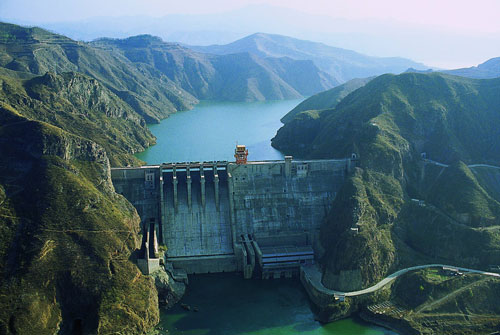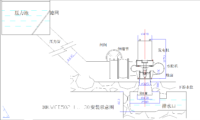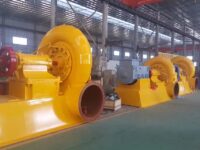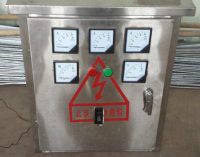Micro Hydro System
If you have water flowing through your property, you might consider building a small hydropower system to generate electricity. Micro hydropower systems usually generate up to 100 kilowatts of electricity. Most of the hydropower systems used by homeowners and small business owners, including farmers and ranchers, would qualify as micro hydropower systems. But a 10-kilowatt micro hydropower system generally can provide enough power for a large home, a small resort, or a hobby farm.
A micro hydropower system needs a turbine, pump, or waterwheel to transform the energy of flowing water into rotational energy, which is converted into electricity.
Micro Hydro System – advantages
- Efficient energy source
It only takes a small amount of flow (as little as two gallons per minute) or a drop as low as two feet to generate electricity with micro hydro. Electricity can be delivered as far as a mile away to the location where it is being used.
- Reliable electricity source
Hydro produces a continuous supply of electrical energy in comparison to other small-scale renewable technologies. The peak energy season is during the winter months when large quantities of electricity are required.
- No reservoir required
Micro hydro is considered to function as a ‘run-of-river’ system, meaning that the water passing through the generator is directed back into the stream with relatively little impact on the surrounding ecology.
- Cost effective energy solution
Building a small-scale hydro-power system can cost from $1,000 – $20,000, depending on site electricity requirements and location. Maintenance fees are relatively small in comparison to other technologies.
- Power for developing countries
Because of the low-cost versatility and longevity of micro hydro, developing countries can manufacture and implement the technology to help supply much needed electricity to small communities and villages.
- Integrate with the local power grid
If your site produces a large amount of excess energy, some power companies will buy back your electricity overflow. You also have the ability to supplement your level of micro power with intake from the power grid.
Micro Hydro System – Disadvantages
- Suitable site characteristics required
In order to take full advantage of the electrical potential of small streams, a suitable site is needed. Factors to consider are: distance from the power source to the location where energy is required, stream size (including flow rate, output and drop), and a balance of system components—inverter, batteries, controller, transmission line and pipelines.
- Energy expansion not possible
The size and flow of small streams may restrict future site expansion as the power demand increases.
- Low-power in the summer months
In many locations stream size will fluctuate seasonally. During the summer months there will likely be less flow and therefore less power output. Advanced planning and research will be needed to ensure adequate energy requirements are met.
- Environmental impact
The ecological impact of small-scale hydro is minimal; however the low-level environmental effects must be taken into consideration before construction begins. Stream water will be diverted away from a portion of the stream, and proper caution must be exercised to ensure there will be no damaging impact on the local ecology or civil infrastructure.



